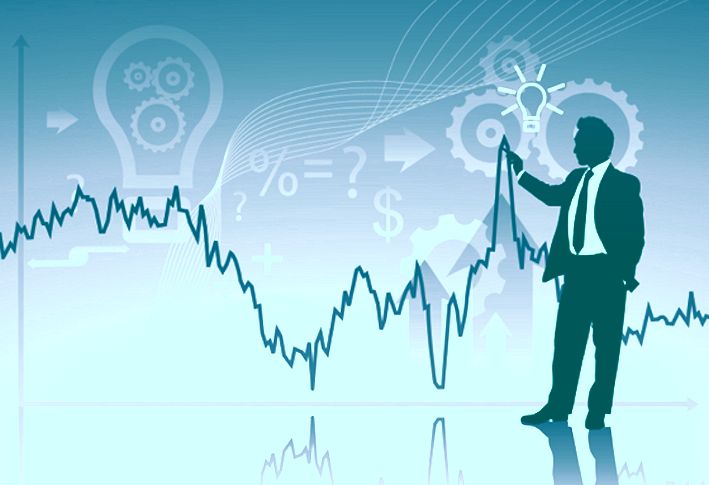
![]() Teach a parrot the terms ‘supply and demand’ and you’ve got an economist.
Teach a parrot the terms ‘supply and demand’ and you’ve got an economist.
Thomas Carlyle
As scarce as truth is, the supply has always been in excess of the demand.
Josh Billings
If some stock categories get too hot-and-pricey, mass supply is created via stock offerings to tap that cheap money – and, when overdone, drives it all down.
Kenneth Fisher
We hear of the wealth of nations, of the powers of production, of the demand and supply of markets, and we forget that these words mean no more, if they mean any thing, then the happiness, and the labor, and the necessities of men.
Frances Wright
Products are made to be sold (supply) and consumed (demand). Supply is how much of something is offered for sale at a certain time. In most cases, producers can increase supply when demand goes up, but this does not apply to everything, especially raw materials. Market supply is the sum of all sellers’ individual supplies. Demand for a product means how much consumers buy that product. Individually, a consumer’s actions make little difference. If someone decides to buy more or fewer beauty products but everyone else goes on buying as before, then it will make no difference. But if everyone starts to buy more, that will make a difference and demand rises. Demand falls when people all decide they want to buy less.
The market forces of supply and demand set the price at which sellers are willing to sell and buyers are willing to buy. If something becomes scarce, prices go up. Oil production, for example, cannot be increased beyond a certain limit, at least in the short term, so when there are crises like the war in Iraq, with a resulting drop in oil production which other countries cannot compensate for, prices rise. In the same way, if there is a lot of something available, prices go clown. The factors influence each other: with products that are not considered basic needs, price is an important factor in demand and, as supply is mostly a response to demand, price also usually affects supply. A fall in price usually makes you want to buy more, and a rise in price makes you want to buy less. Basic needs arc referred to as “inelastic demand”. Things that we want, but can do without are classified as “elastic demand”.
Trade restrictions and distortion. The importation and exportation of goods may he subject to restrictions imposed for a variety of reasons. These may include, commercial restrictions like tariffs – and quotas which can be adopted either by national governments or by trade blocs. • tariffs are taxes placed on imports by national governments or trade blocs. By increasing the price of foreign goods on the domestic market, tariffs protect local producers, as consumers are discouraged from buying snore expensive imported products; • quotas establish the maximum quantity of something which can he imported and are again decided by national governments or trade blocs to protect their own industries. If you wish to import goods subject to quotas, you must first obtain an import licence, i.e. an authorisation to introduce them into your country. Trade may also be restricted for reasons that are not strictly commercial. Sensitive technology and components that can be used to develop armaments are usually exported
only under government supervision and the sale abroad of national antiques is forbidden in most countries.
The export of any restricted goods requires an export licence. Non-commercial restrictions include: • trade sanctions or embargoes, which are usually imposed by governments as an expression of disapproval of a country’s policies. Restrictions may be general, i.e. involve all types of product or specific, i.e. involve particular types of product. For example, within the European Union, arms embargoes are in force against several countries including Afghanistan, China, Liberia, Libya, Sudan and Zimbabwe. Other restrictions can be to protect health or consumers’ rights and may take the form of: • bans, when something may not be imported at all.
An example of this type of restriction is the ban on importing poultry from certain areas as a result of the bird-flu scare; • regulations and standards, which often apply to products destined for human consumption in one way or another, either because it is felt that these could be a health risk (as in some Chinese toys which do not respect EU safety regulations) or because they do not match product descriptions. An example of this latter case is Indian “whisky”, which cannot be sold in the EU as whisky because it is made froth sugar cane, and not malt. Trade can also be distorted by: • government subsidies, which allow companies to produce for less than cost price and therefore to charge less than foreign competitors. These may be challenged by appealing to the WTO, the World Trade Organization; • dumping, which is selling at prices lower than cost or than the price in the home market, to squeeze out competitors, win foreign customers or to reduce excess stocks. Anti-dumping legislation makes this practice illegal.
Read more about these topics downloading English Living Commerce in Summaries
Other pages on these topics:

